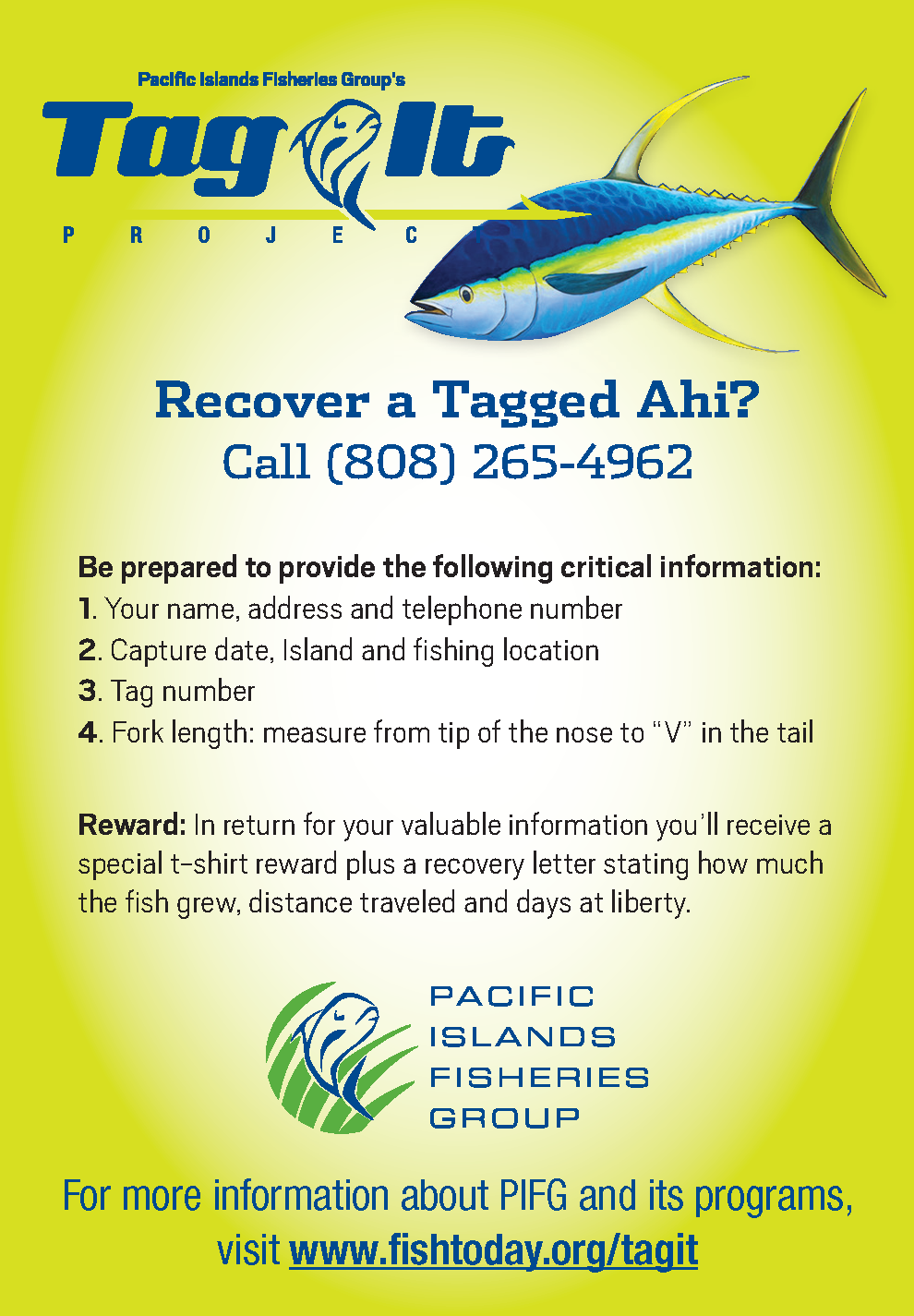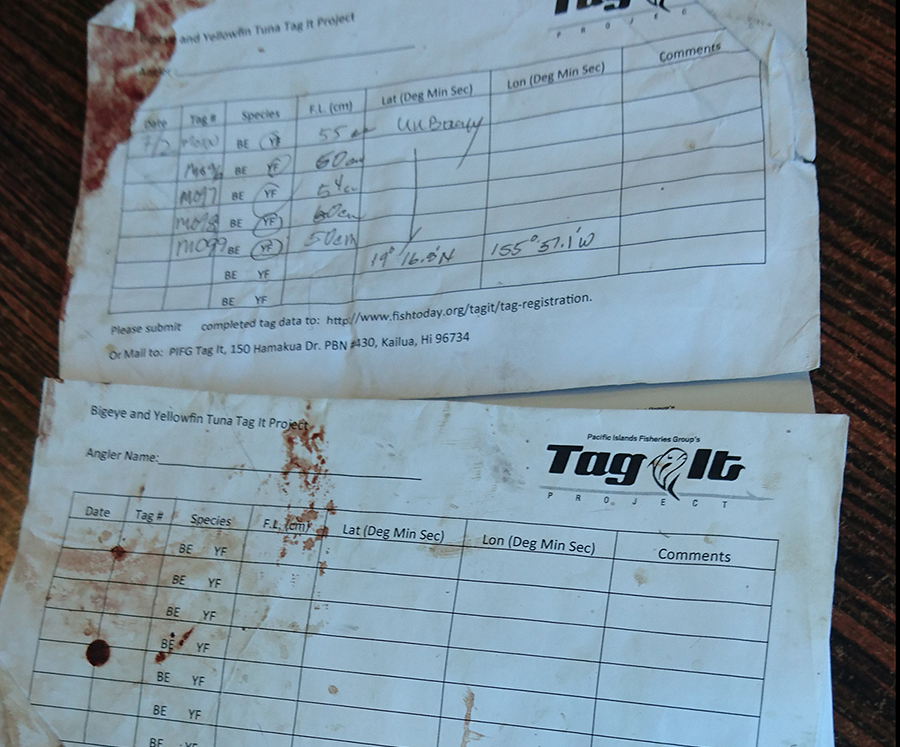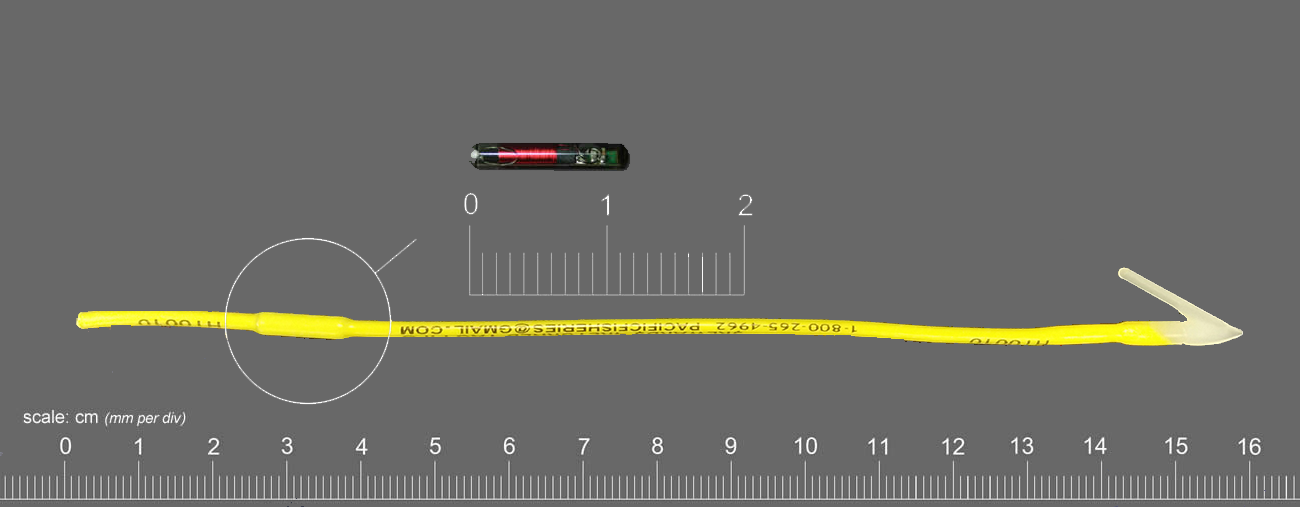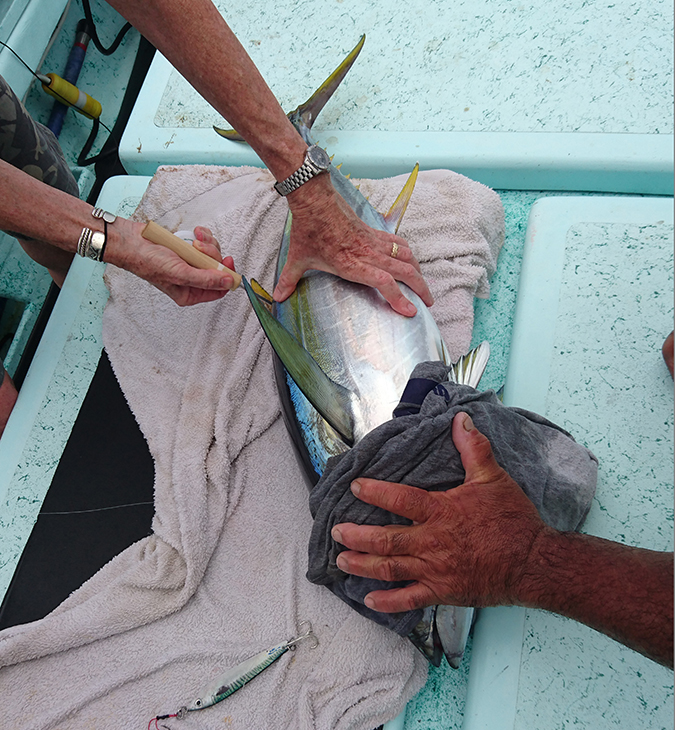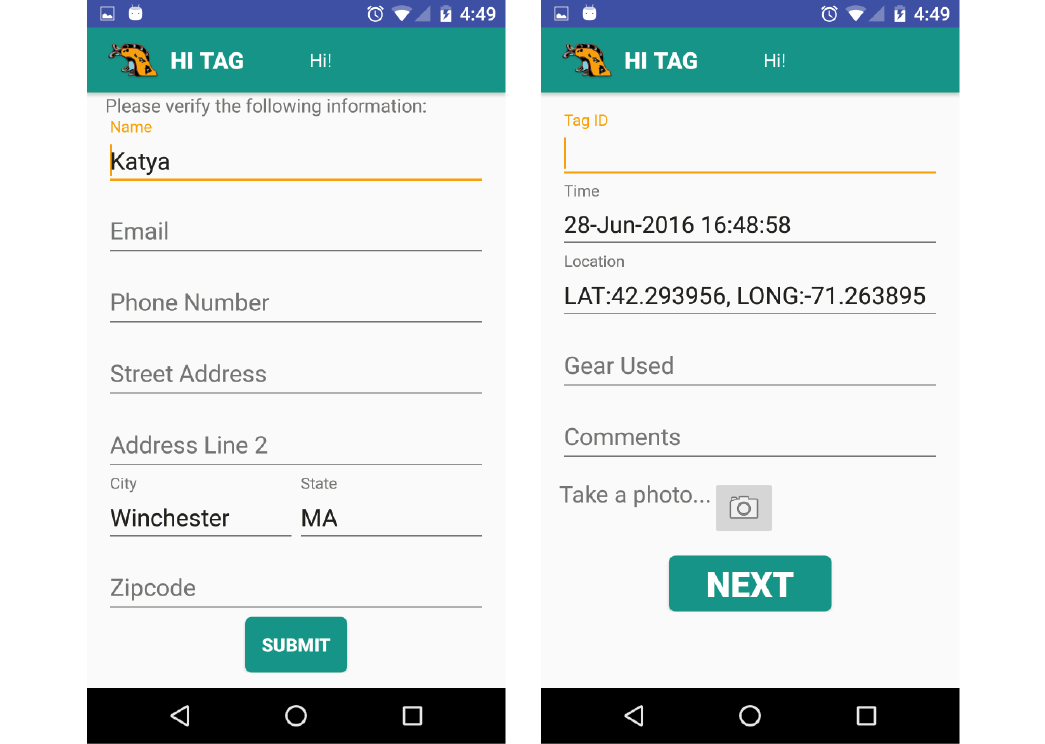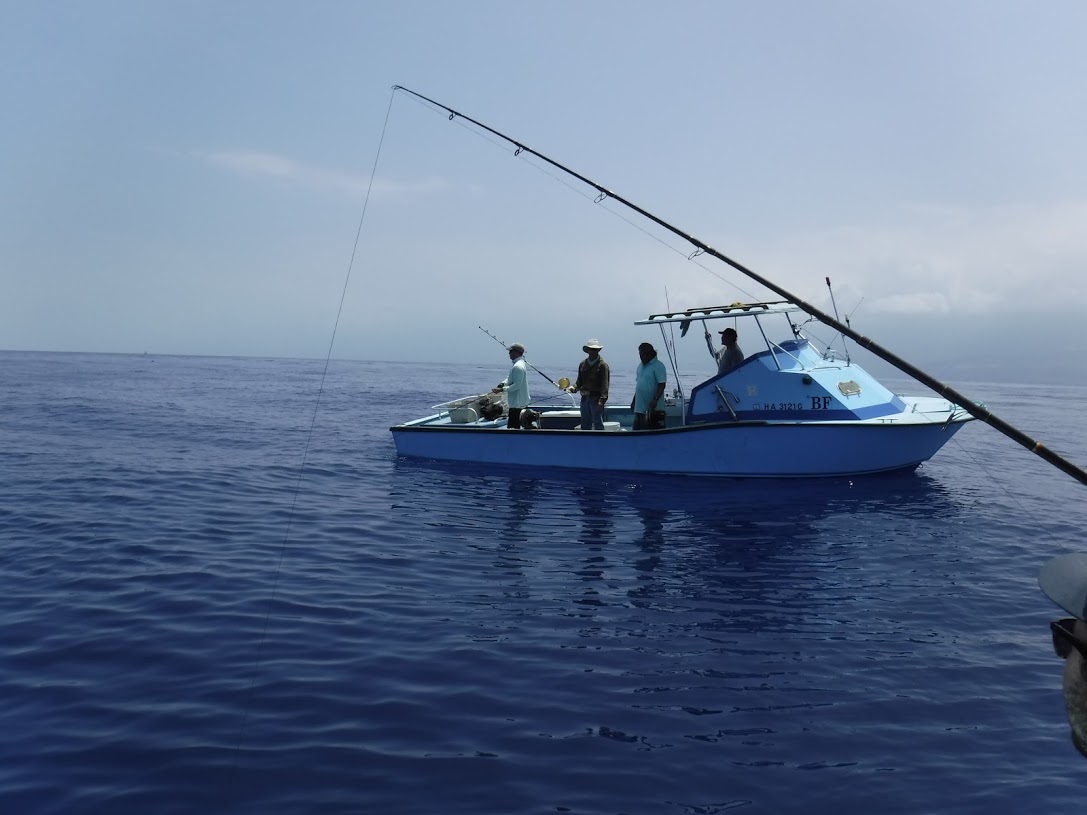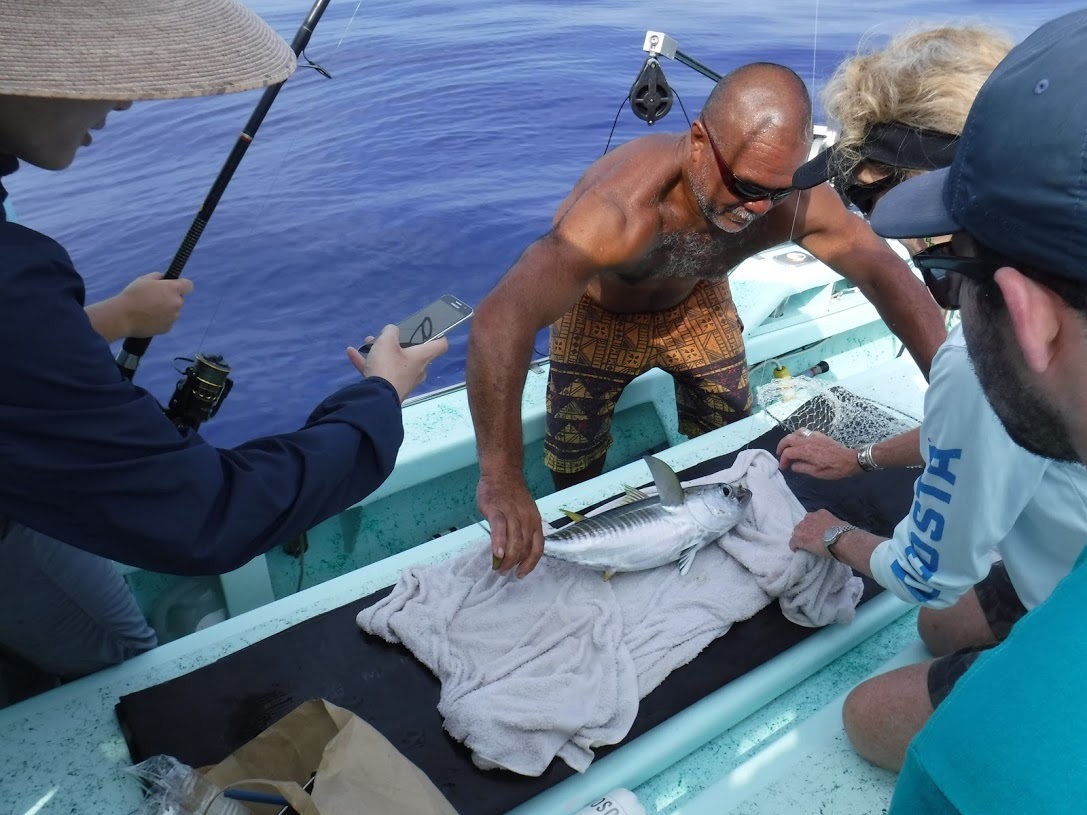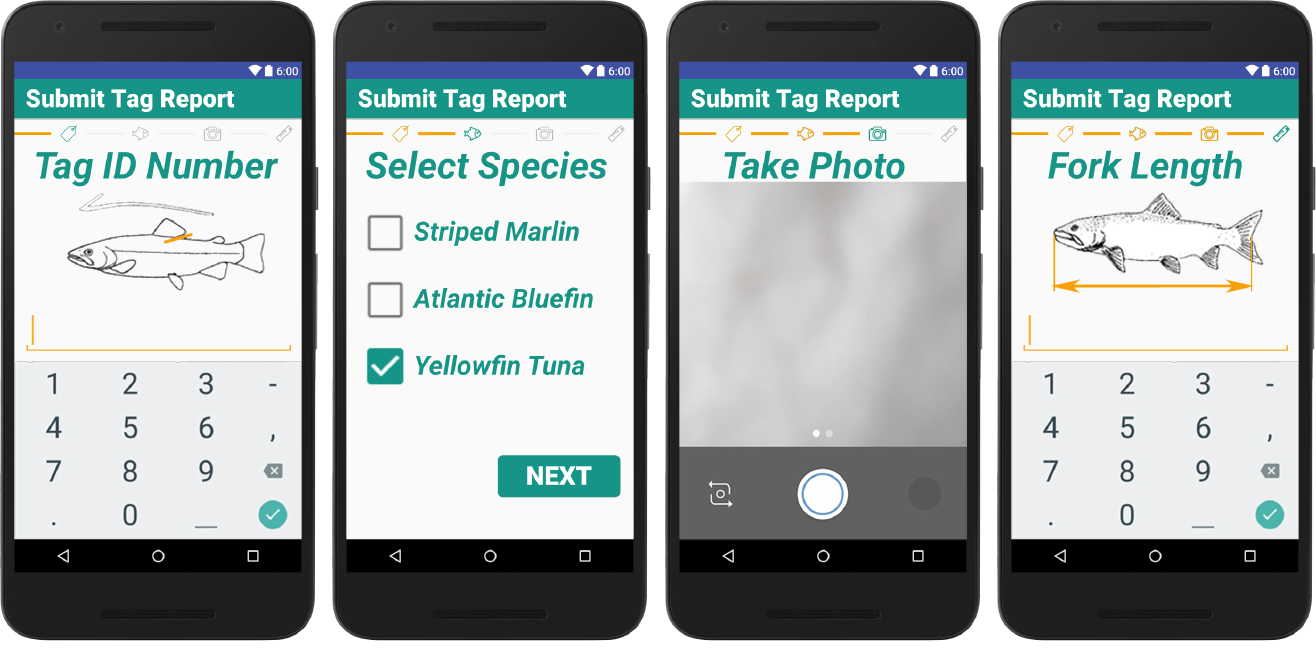
Commercial and recreational fishing are regulated to protect marine environments and establish a safe and sustainable fish economy. Fish tagging programs help inform these decisions by giving an idea of how fish populations move and grow.
We worked with the Large Pelagic Research Center and the Pacific Islands Fisheries Group to develop a better fish tagging process that incorporates RFID technology with an mobile app called HI (Hawaii) Tag. It encourages fishermen participation to gather larger, richer sets of data which researchers can easily access and work with.
I worked on the workflow inside of the Android app, encompassing the UI and UX. We presented our work at IEEE/MTS OCEANS Monterey 2016.
